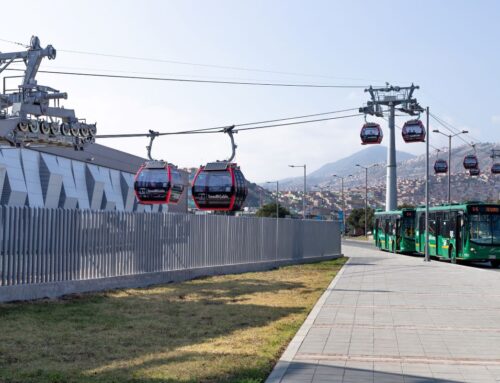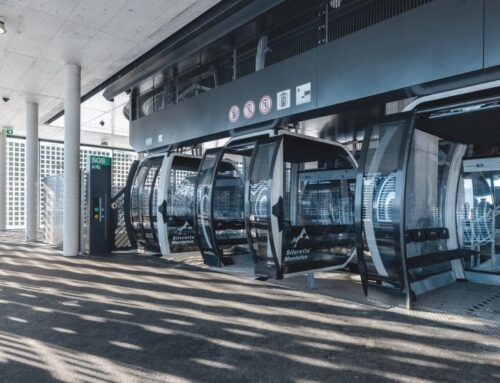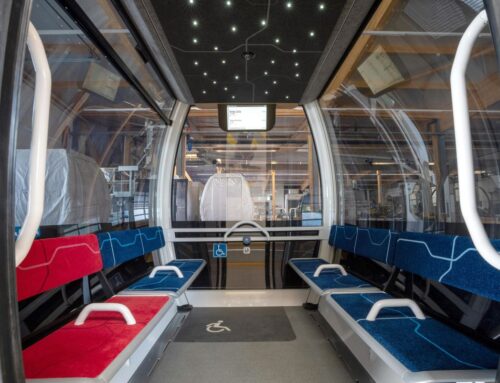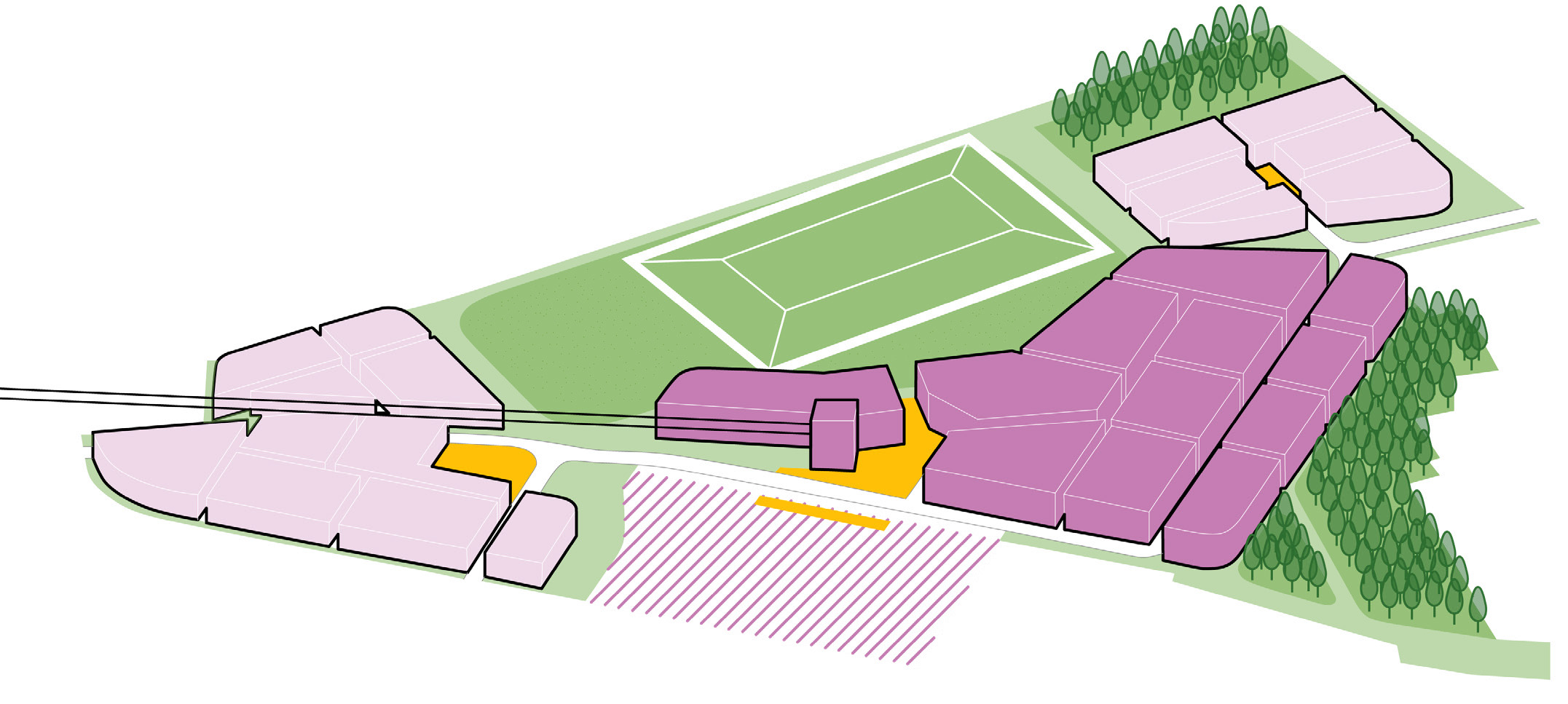
Cities
First the cable car, then the settlers
The former Blumenthal mining site has been lying fallow since 2001 and, covering approximately 23.5 hectares, represents the largest land reserve in the city of Herne.
Due to its central location, the area has great potential for urban development in Herne and is set to become “Techno Ruhr International” – a modern, integrated high- and green-tech district with a wide range of knowledge- and technology-oriented, high-value services, providing around 4,000 jobs in a green environment.
Cable car as the main access
The Blumenthal area is to be developed as a car-light campus, as Mayor Frank Dudda recently stated at the Cable Car World 2024 congress:
“We need the mobility solution first, and only then the settlement. Otherwise, we will create a traffic chaos that becomes a permanent issue.”
To achieve this goal, urban planners are pursuing a close integration with the surrounding area and the promotion of climate-friendly modes of transport. A cable car, as an innovative means of transportation, is planned to directly connect the campus to Wanne-Eickel station.
Moreover, the cable car is to be integrated into the existing public transportation network (bus routes). In addition, the planners intend to promote active forms of mobility – such as walking and cycling. Various footpaths and cycle paths from the surrounding area will be directed onto the site.
Politically Desired
Frank Dudda (second from the right), Mayor of Herne, is pushing for the cable car despite all bureaucratic obstacles.
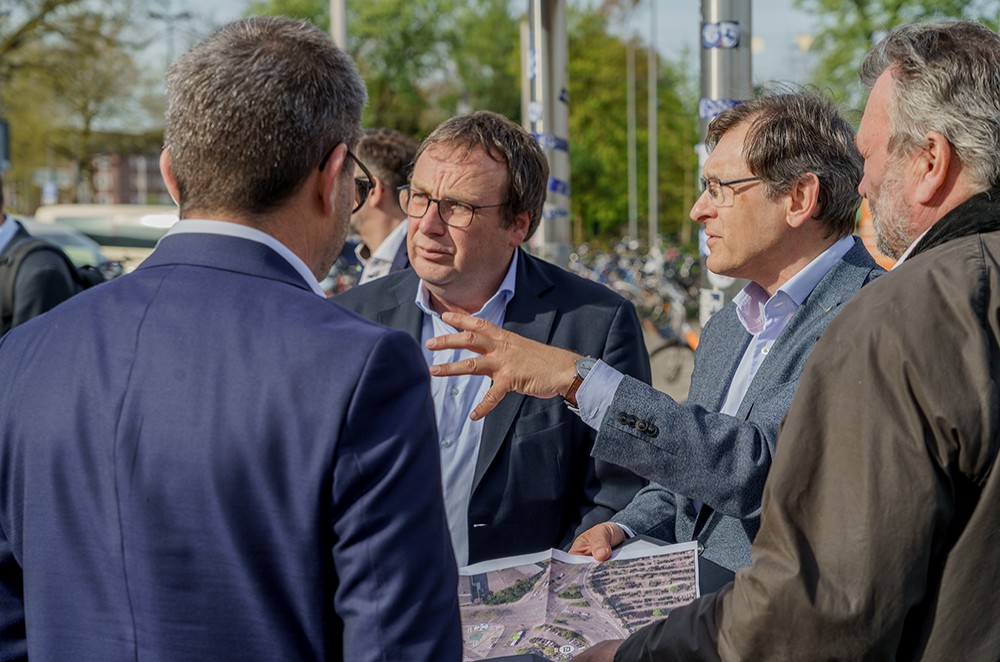
Stations as mobility hubs
Mobility hubs are planned at the entrances to the campus and at the cable car station. To minimize motorized individual traffic on the campus, the two mobility hubs at the entrances will offer parking facilities and allow a transition to alternative mobility options.
The mobility hub at the cable car station will also provide connections to climate-friendly local mobility forms, such as bike-sharing and integration with bus routes.
These mobility hubs are designed to be green and adaptable, contributing to the microclimate today and allowing for future adjustments to changing mobility needs.
Current Planning Status
In Herne, the technical specifications for the cable car are already established: an aereal tramway will be used for the approximately one-kilometer-long route.
Two cabins, each with a capacity of 40 passengers, will transport guests between the two stations at a speed of seven meters per second, with a travel time of 3.5 minutes.
This system will have a capacity of 500 people per hour in each direction. It is designed to be expandable if demand increases. The planners aim to use only two support towers for the system.
Technical data:
Cable car Herne
| Type | Areal tramway |
| Length | 1,050 m |
| Speed | max. 7 m/s |
| Travel time | 3,5 min. |
| Cabins | 2 |
| Cabin capacity | 40 P. each |
| Towers | 2 |
Steps taken
The cable car project is on a promising path, as emphasized by Dudda. The technical feasibility study has already been completed, and the responsible parties have also identified a preferred option for the route and line system.
“A detailed technical longitudinal section that specifies the route is also available. Last but not least, a simplified cost-benefit analysis is on the plus side,” said Dudda.
In a special session at the end of 2023, Herne’s political leaders almost unanimously agreed to continue advancing the plans for the cable car. During this session, the current plans and a feasibility study were presented. The construction costs are estimated at 31.83 million euros.
Mobility plan
The cable car plays a central role in the development of the area.
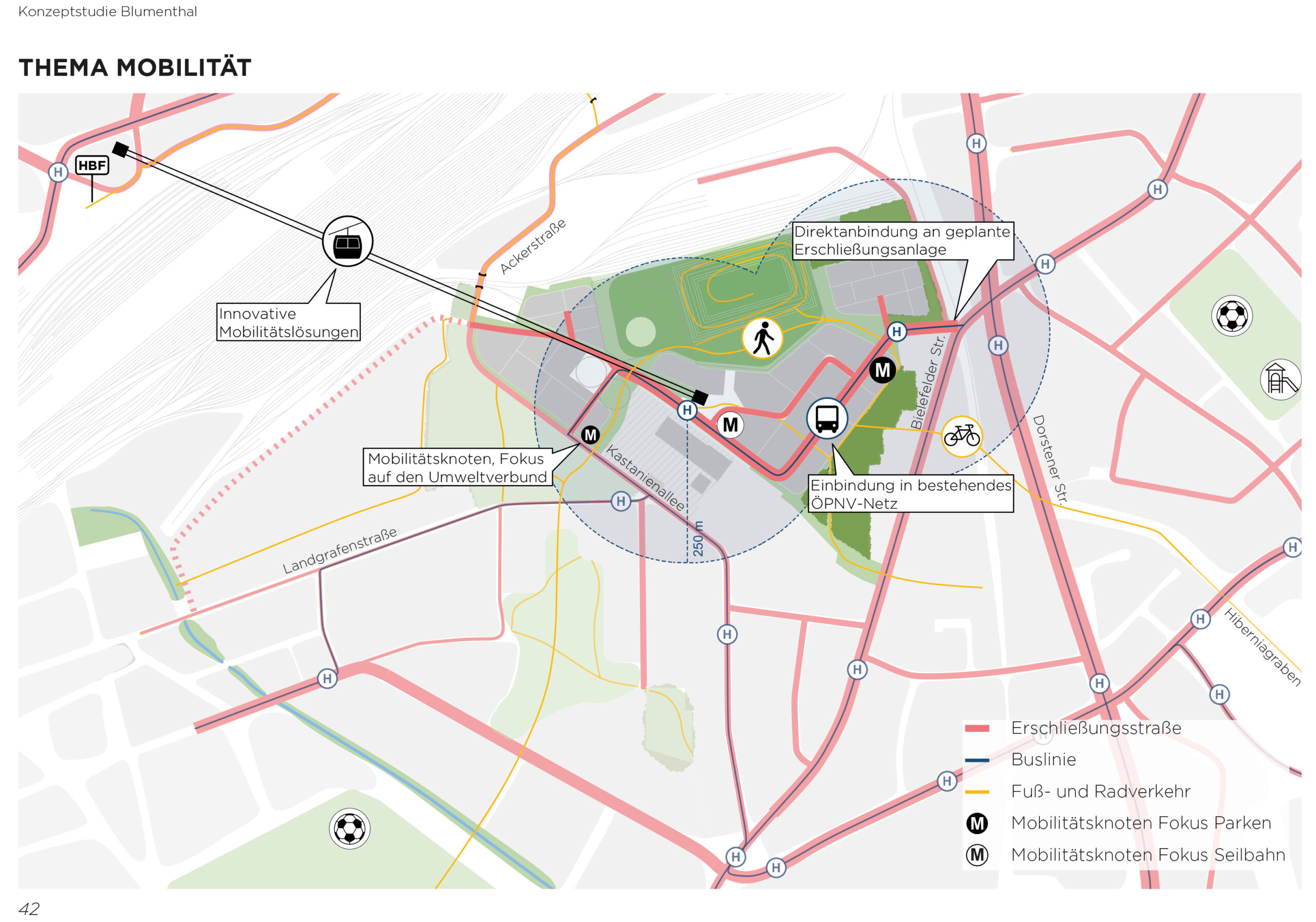
Next steps
The feasibility study confirms that the cable car would be eligible for funding. Therefore, Herne plans to apply for grants from the state and federal transportation ministries.
The implementation of the cable car in Herne depends on the approval of this funding application. If the funding is granted, construction could begin between 2025 and 2030.
Currently, the city of Herne is seeking technical and legal support, and is also preparing the procurement process, including market research and the creation of preliminary assessments. Additionally, the project will need to go through committee reviews with the regional government, the Ruhr Regional Association, and the federal state.
Further potential
In the vicinity of the Blumenthal area is the also decommissioned Shamrock power plant, which adds an additional 2.5 hectares to the development potential.
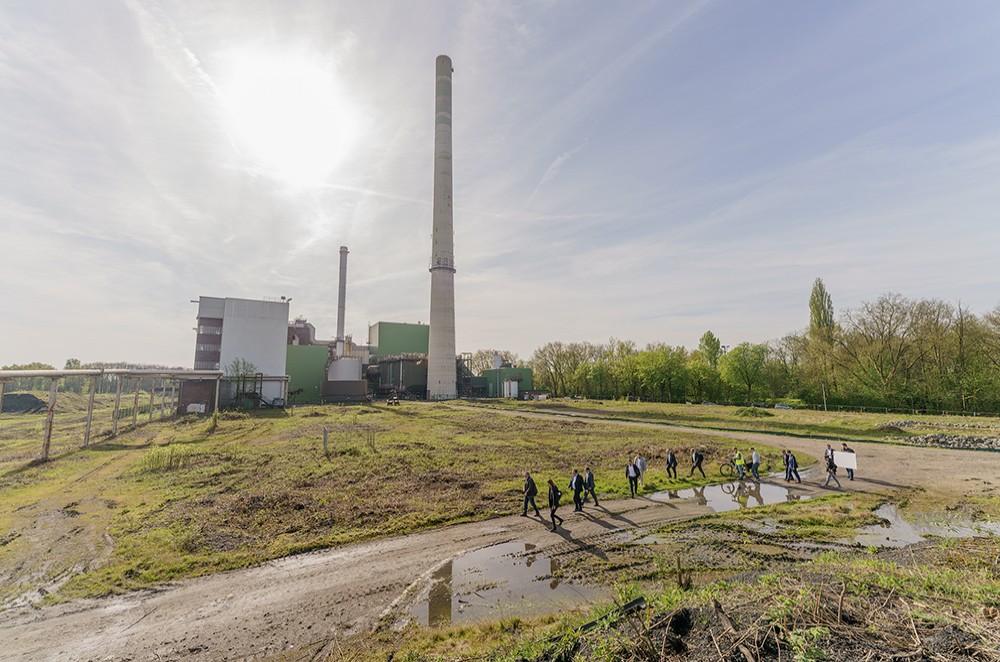
Bureaucracy as a brake
The biggest challenge is crossing the railway tracks, as Dudda explains:
“The district of Wanne-Eickel is not called the city of a thousand trains for nothing. The bureaucratic hurdles are high when it comes to running the cable car over the wide railway facilities. The mobility service provider Transdev acts as an intermediary between us and Deutsche Bahn, as we sometimes speak different languages.”
Dudda remains optimistic about overcoming the ensuing bureaucratic hurdles: “Anyone who wants to implement an urban cable car in Germany needs strong nerves and must be able to handle setbacks. But I want to encourage everyone – it’s worth it.”
